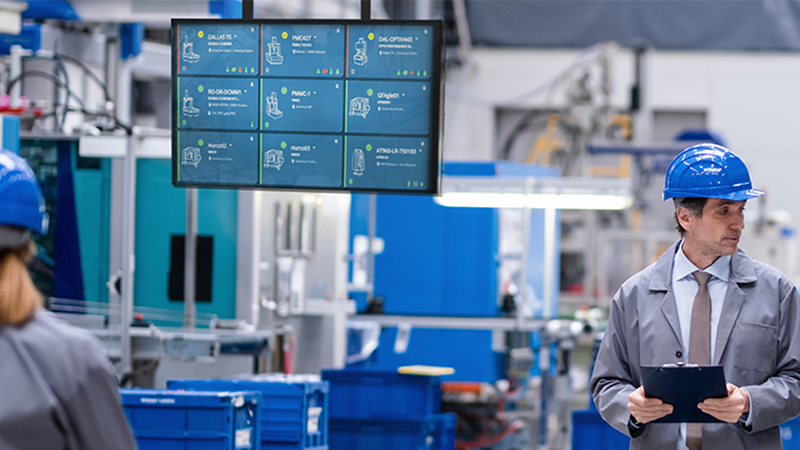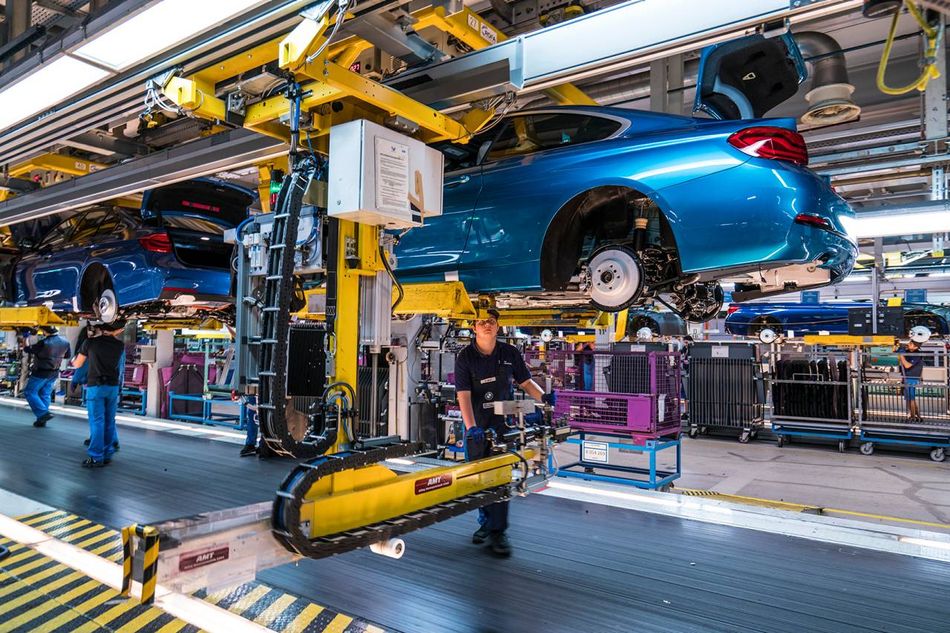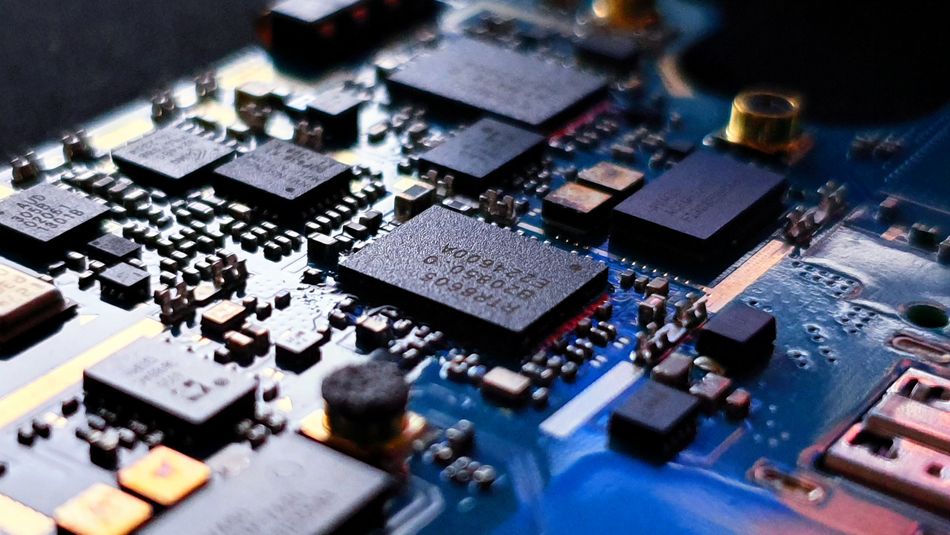Challenges and Trends in Connectivity Technologies for Smart Manufacturing
Article #3 of our Industrial IoT revolution series. Although data is the key in deriving meaningful insights, feature-full connectivity has emerged as a leading need in retrofitting existing manufacturing environments with automation.

Image credit: Hexagon.
This is the third article in a 6-part series featuring the connectivity technologies that are enabling the Industrial IoT revolution. The series introduces and explains the applications of wired and wireless connectivity technologies in various industries. This series is sponsored by Mouser Electronics. Through its sponsorship, Mouser Electronics shares its passion for technologies that enable the continued sustainable growth of Industrial IoT. This article was co-authored by Gijs Werner.
The fourth industrial revolution
Often called the fourth industrial revolution, industry 4.0 refers to the interconnected ecosystem of smart machines, smart services, and smart production that together transform automated processes into autonomous ones. While Industry 3.0 focused on combining physical and computational systems to make processes more efficient, Industry 4.0 aims to make such cyber-physical systems intelligent and connect them across the entire supply chain. Check out our eBook: Industry 4.0 Deep Dive or our article: The Engineer's Guide To Industrial IoT And Industry 4.0 to read more on the topic.
All in all, Industry 4.0 is about reaping the benefits of real-time data. Manufacturing environments have made headway toward this goal by digitizing machinery, connecting infrastructure, expanding the use of robotics, and applying Artificial Intelligence (AI) to processes. The transition is complex, however, and poses many design challenges, so progress is often made piecemeal.
Although data is key in deriving insights, highly dense, feature-full connectivity has taken a leading role in helping traditional manufacturing environments transition to automated and autonomous processes. This article explores current trends in manufacturing design and highlights what's about to come in the industry.
Design challenges in smart manufacturing
Smart manufacturing makes processes as efficient, safe, and consistent as possible. Industry 3.0–era manufacturing environments use data to analyze process efficiency, control robotics, and so forth. Data collected, analyzed, and acted on in real-time, however, offers enormous potential for manufacturers to provide flexible, customizable production solutions, maximize efficiency, and adapt to changing needs.
Today's manufacturing environments are adding automation and intelligence throughout the production process, one step at a time because of the planning and resources required to overcome the challenges in designing for manufacturing environments.
Designing for harsh environments
Manufacturing environments are inherently dirty, moist, noisy, vibrating, gyrating, chemically caustic, hot, or cold. In fact, they typically include a combination of such harsh elements. These factors can affect system performance, maintenance needs, lifespan, and they relate to human health and safety, as well.
Collecting and processing data from multiple nodes
Identifying the right kinds of data to collect and at what points in the process is an enormous undertaking. Collecting and processing data can require hundreds of thousands or even millions of sensors and processing devices to be added to the environment. Sensors create enormous amounts of data that then needs to be exchanged across numerous devices and interfaces.

Enabling reliable connectivity on low-power devices
Automation and intelligence depend not just on the devices but on connectivity as well. Connectivity is quite literally the digital thread that connects all the pieces including the components, devices, systems, tasks, subtasks, processes, robotics, data, analytics, adjustments, and users in the loop.
Every interface is a transition point that can facilitate large quantities of data, at high speeds, and with stable signal quality—and do so reliably. Speed, Volume, and quality of data are interrelated, and in many solutions, one of these is often sacrificed.
In manufacturing environments, devices and systems must reliably accommodate all three. These devices and systems must consume low power, and while designing such devices, special care should be taken to not increase physical space requirements or add to the load on existing wires.
Design trends in smart manufacturing
Sensing, connectivity and other Industrial Internet of Things (IIoT) technologies are reshaping manufacturing systems to make them agile and boost the overall productivity of the ecosystem. Let’s take a look at some of the recent design trends that are driving this change.
Adoption of 5G connectivity
5G is emerging as a potential solution for supporting millions of devices at ultrafast speeds. Although 5G offers the potential to deal with multiple device protocols and offers low latency, it is not a panacea.
Transitioning from 4G to 5G would require upgrades of all devices, which would be substantial in manufacturing environments and perhaps impossible in the immediate future. In addition, because some 5G signals cannot pass through hard surfaces, cell towers would be needed within factories, adding cost and taking up valuable physical space.
Dense Devices packed with more features in less space
Another design trend is making devices denser by adding features without increasing their sizes. Devices are miniaturized so that they take up less physical space. Such devices can be difficult to protect, install, or maintain in harsh environments.
Consider, for example, installing or inspecting solder joints on a tiny device or ensuring the required distance from other devices. Having too many signals or different types of signals running through a tiny device can decrease the signal quality and add signal noise, thus compromising the integrity of the device.

Inputs/outputs might be added to an existing device to accommodate more data or additional types of data within a given form factor. Again, this trend addresses physical space challenges but increases the signal density that can affect the signal quality and overall device reliability.
Power supplies are now being incorporated into Personal Communications Services (PCS) devices to limit the need for distributed power sources. Here, although Power over Ethernet (PoE) or Power over Data (PoD) are helping address these needs, embedding power electronics on the device creates additional design challenges in shielding components against electromagnetic interference (EMI) and maintaining signal quality.
Legacy and other Protocols
Finally, another trend relates to addressing the numerous legacy automation protocols that are still widely used—and are highly successful—in many industries. Because communication protocols are what enable communication from one device to another and from one system to another, they can be complex.
In retrofitting existing industrial equipment, designers might have to reduce the number of protocols to minimize the number of communication transition points across the entire production network. Alternatively, designers can use interfacing software to connect systems running on different protocols.
Neither solutions, however, address the fact that the legacy protocols are not going away any time soon.
Connectivity is key
Reliably delivering high volumes of data in real-time across complex systems in harsh environments is the cornerstone of smart manufacturing—and a tall order for manufacturing designers. This notion remains constant whether adding intelligence to a single device, automating part of a process, controlling complex robotics, or automating an entire production line.
What's ahead as more and more manufacturing environments add automation and intelligence? As foreshadowed by current design trends:
- Devices will likely continue to incorporate more features and capabilities within the same or smaller form factor. Thus, components will need to be compact and offer capable, yet flexible interconnects to peripherals, such as sensors, actuators, cameras, and power supplies.
- Reliable, high-bandwidth connectivity will become critical in manufacturing environments where process control is driven in real-time by high-speed and high-volume data.
- Signal quality will improve in dense or miniaturized devices. Here, components will need to offer multiple, flexible configurations as well as latches and other secure endpoints that ensure reliable connectivity.
- Devices will operate reliably under more extreme conditions, which means including ruggedized, International Protection (IP) Code–rated housing and components, locking and hold-down features, solder tails, and visual matching cues.
- Devices will support legacy and newer protocols but simplify other aspects by being fully compatible and eliminating the need for protocol conversion gateways.
- Device power will piggyback off existing ethernet connections. Using single-pair cabling would provide power without requiring an additional power source or generating EMI.
- Wireless devices that use 5G will be incorporated where tight spaces or other requirements hinder hardwired solutions and where cell towers can be added. It's likely, though, that critical and safety devices will continue to be hardwired.
Conclusion
Industry 4.0 features automation and data exchange across technologies and processes to create highly efficient, highly customized, mass-produced products. Data and connectivity are key to maximizing the potential benefits of automated, intelligent manufacturing processes.
In response to current design needs, manufacturing designers are now incorporating additional capabilities, features, and components into devices within the same or a smaller physical footprint. Moving ahead, design engineers need to meet today's device requirements while also keeping an eye on the larger industrial revolution. Dense, compact, and secure devices will help meet today's challenging design demands and provide lasting solutions.
This article was initially published by Mouser and Amphenol in an e-magazine. It has been substantially edited by the Wevolver team and Electrical Engineer Ravi Y Rao. It's the third article of a 6-part series that covers the key trends in connectivity technologies related to smart manufacturing. Future articles will introduce readers to some more interesting applications of connectivity technologies enabling the IIoT revolution in various industries.
Article one explained how electrical interconnects are engineered in data centers to deliver high power in a small footprint.
Article two was about the sensing technologies used in Building Automation Systems
Article three analyzed the key trends and challenges for connectivity technologies used in smart manufacturing.
About the Sponsor: Mouser Electronics
Mouser Electronics is a worldwide leading authorized distributor of semiconductors and electronic components for over 1,100 manufacturer brands. They specialize in the rapid introduction of new products and technologies for design engineers and buyers. Their extensive product offering includes semiconductors, sensors, interconnects, passives, and electromechanical components.

